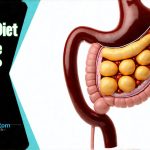The modern food landscape is characterized by rapid shifts in dietary trends and an overwhelming abundance of quick-fix solutions for health and wellness. From intermittent fasting to keto, paleo to veganism, and everything in between, it’s easy to get caught up in the allure of transforming your diet overnight. While many of these approaches can have legitimate benefits when implemented thoughtfully, abruptly changing what – and how – we eat often leads to unpleasant physical consequences, most notably, cramping. These aren’t simply a nuisance; they are signals from our bodies telling us that something isn’t quite right, and ignoring them could potentially hinder long-term health goals. This article will delve into the reasons why quick meal swaps or trendy diets frequently trigger cramping, how to recognize different types of cramps related to dietary changes, and what steps you can take to mitigate these uncomfortable experiences.
Cramping, in this context, isn’t always about abdominal discomfort alone. It can manifest as muscle spasms in legs, feet, even the back – all linked to the physiological stress caused by sudden nutritional alterations. The body is remarkably adaptable, but it needs time and a gradual approach to adjust to new demands. When we drastically change our diet, particularly if it involves eliminating entire food groups or dramatically altering macronutrient ratios, we disrupt established metabolic processes, electrolyte balance, and gut microbiota composition. This disruption often results in the types of cramping experienced by many attempting rapid dietary changes, highlighting the importance of a balanced and sustainable approach to nutrition rather than chasing fleeting trends.
The Science Behind Dietary Cramps
The core reason quick meal swaps or trendy diets induce cramps lies within our digestive system and its intricate relationship with electrolytes, hydration, and gut bacteria. When we suddenly introduce new foods or restrict existing ones, the gut’s microbiome – that vast community of microorganisms living in our intestines – experiences a shock. These microbes play crucial roles in digestion, nutrient absorption, and even immune function. A rapid dietary change can upset this delicate balance, leading to dysbiosis, an imbalance in gut bacteria that can trigger inflammation and contribute to cramping. Furthermore, many trendy diets involve significant changes to fiber intake. Suddenly increasing or decreasing fiber can both lead to digestive distress including bloating, gas, and yes, cramps – as the system struggles to adapt.
Beyond the gut, electrolyte imbalances are a frequent culprit. Many restrictive diets (like low-carb options) promote increased water loss, often without adequate mineral replacement. Electrolytes like sodium, potassium, magnesium, and calcium are essential for muscle function; their depletion can lead to painful spasms. For example, reducing carbohydrate intake forces the body to expel more water, which also flushes out electrolytes. Similarly, a sudden increase in protein intake requires kidneys to work harder, potentially leading to imbalances. The interplay between hydration, electrolyte balance, and gut health is fundamental to understanding why these dietary changes often result in cramping. If you suspect acid reflux might be contributing to your discomfort, exploring that avenue can be helpful.
Finally, it’s important to remember that the nervous system plays a role. Our digestive system is heavily innervated; sudden changes can overstimulate nerve endings, leading to increased intestinal motility (movement) which can manifest as cramps and pain. This is particularly true if the diet change also involves eliminating foods that typically soothe the digestive tract or introducing ones that are difficult to digest. A holistic view – encompassing gut health, electrolyte balance, hydration status, and nervous system response – is essential for understanding the root cause of these symptoms. Understanding stomach acid levels can also play a part in digestion.
Identifying Different Types of Cramps
Cramping isn’t a monolithic experience; its character can provide clues about the underlying cause related to dietary changes. Leg cramps are often linked to electrolyte imbalances, specifically potassium, magnesium or calcium deficiencies exacerbated by rapid hydration shifts associated with certain diets (like keto). These cramps typically occur at night and can be intensely painful. Abdominal cramping, on the other hand, is more frequently tied to digestive upset – either from increased fiber intake, altered gut microbiota, or food sensitivities triggered by the new diet. The location of abdominal cramps can also hint at the issue; lower abdominal pain might suggest issues with the large intestine (related to fiber), while upper abdominal discomfort could be a sign of gallbladder stimulation due to higher fat intake.
Another common type is watery diarrhea accompanied by cramping, often seen when switching to diets high in unfamiliar foods or those that rapidly increase gut motility. This usually indicates the digestive system is overwhelmed and struggling to process the new food components. Conversely, constipation coupled with cramps can occur with insufficient fiber intake or dehydration – a frequent side effect of low-carb diets if fluid consumption isn’t adequately increased. It’s important to note that these are generalizations; individual experiences will vary based on pre-existing conditions, metabolic rate, and overall health status. If frequent nausea accompanies cramping, it is best to seek medical advice.
Understanding the timing of cramps is also crucial. Are they occurring immediately after eating a specific food? This could point toward an intolerance or sensitivity. Do they appear hours later? This might suggest a broader digestive issue related to the overall dietary change. Paying attention to these nuances can help pinpoint the source of the discomfort and guide appropriate adjustments. It’s vital, however, to differentiate between diet-related cramps and those caused by other medical conditions; persistent or severe cramping should always be evaluated by a healthcare professional. If you’re experiencing throat burning, consider exploring potential causes.
Mitigation Strategies: A Gradual Approach
The most effective way to prevent cramping from quick meal swaps or trendy diets is to avoid them altogether—or at least, approach dietary changes with extreme caution and gradual implementation. Instead of drastically eliminating food groups or adopting restrictive protocols overnight, focus on making small, sustainable changes over time. For example, if transitioning to a vegan diet, introduce plant-based meals gradually, one per week, allowing your digestive system to adapt and ensuring adequate protein intake from diverse sources. This allows the gut microbiome to adjust without experiencing a shock. You might consider meal swaps that are less drastic.
Hydration is paramount. Regardless of the dietary change, increasing water intake is essential – especially when adopting low-carb diets or those that promote increased urination. Electrolyte supplementation may also be necessary if you’re following a restrictive diet known to deplete minerals. Consider incorporating electrolyte-rich foods into your diet (bananas for potassium, leafy greens for magnesium) or discussing appropriate supplementation with a healthcare professional. A practical step is to track your food intake and any associated symptoms. – Keep a food diary – Note the timing of cramps – Identify potential trigger foods This can help you pinpoint specific components causing discomfort and adjust your diet accordingly.
Finally, prioritize gut health. Incorporate probiotic-rich foods (yogurt, kefir, sauerkraut) into your diet to support a healthy microbiome. Consider prebiotics – fibers that feed beneficial gut bacteria – found in foods like onions, garlic, and bananas. Stress management techniques can also play a role, as stress can negatively impact digestion and exacerbate cramping. Remember, the goal isn’t rapid transformation; it’s long-term health and well-being achieved through sustainable dietary habits. If you experience persistent or severe cramps, seeking guidance from a registered dietitian or healthcare professional is essential to rule out other underlying conditions and develop an individualized plan that supports your needs. Additionally, consider whether gut issues could be contributing factors.


















